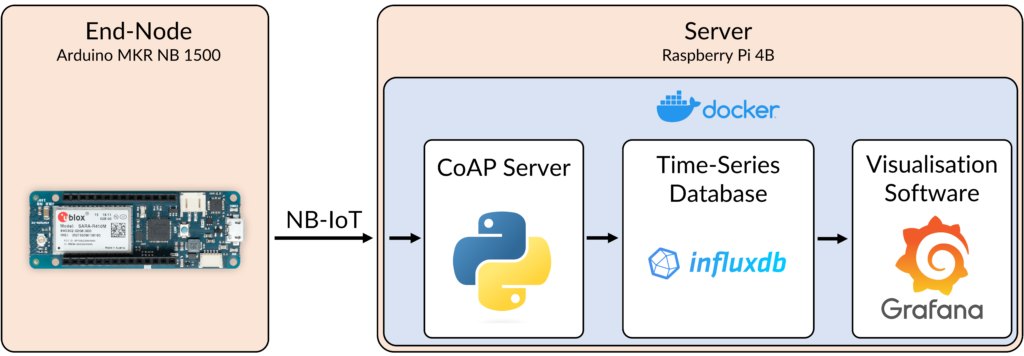Ever since the ‘smart city’ concept was introduced, internet of things (IoT) has been a key pillar of the technological aspect of the development of smart cities. This project sought to create a miniature smart city model implementation, with a small number of heterogeneous physical nodes; this was deliberately not constrained to that number, in order to allow for the possibility of implementation on a much larger scale. The physical nodes consisted of: a car park sensor, a fire-detection system, and an air-quality monitoring system.
Constrained Application Protocol (CoAP) served as the model’s communication protocol, and Narrowband IoT (NB-IoT) technology was employed as the model’s wireless communication medium.
To achieve this, a data collection pipeline was developed using a server with Docker containers for a CoAP server, InfluxDB for storing time series data produced by the physical nodes, and Grafana for data visualisation. The physical nodes were based on the Arduino MKR NB 1500 development board.
The physical nodes were given access to a reliable and secure wireless communication medium, through the use of NB-IoT technology and the CoAP protocol. The integration of InfluxDB and Grafana in the data collection pipeline guaranteed that the data produced by the physical nodes would be effectively stored and viewed.
The project also involved a literature review that explored other implementations that could possibly be integrated into actual smart cities, as well as potential technologies that could be employed, such as low-power wide-area networks (LPWANs), microcontrollers, sensors, and software.
The proposed smart city model contributes towards revolutionising urban management and raising the bar for the quality of life for potential residents. Other areas where IoT could be deployed in creating more complete smart city models would be: traffic management, urban mobility, security, and healthcare.

Figure 1. The Narrowband-IoT (NB-IoT) logo

Figure 2. Data collection pipeline
Student: Jonathan Camenzuli
Supervisor: Dr Ing. Trevor Spiteri
